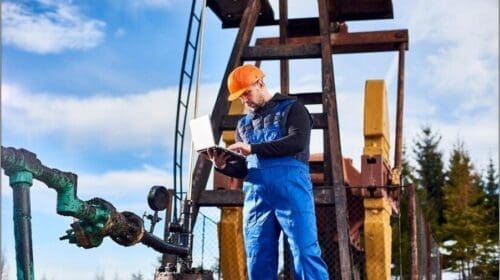Picture this: a state-of-the-art structure that can stand tall in the face of howling winds, heavy snow, and blistering heat. Now, imagine this structure being rapidly deployed almost anywhere on the globe, often in places where traditional constructions would falter. These engineered fabric buildings, and they’re revolutionizing the way industries operate in extreme environments. As the energy sector continues to push the boundaries of where exploration and production can happen, these dynamic structures provide an innovative solution. But what exactly sets them apart from conventional buildings? It’s their unique combination of durability, flexibility, and resilience that makes them a standout option for projects that can’t afford to be delayed by the elements.
Braving the elements with tailor-made shelters
Working in remote locations, especially those subjected to harsh weather conditions, demands shelters that can endure the test of nature. The design features of fabric buildings cater precisely to these challenges. From heavy snowfall in the Arctic to sandstorms in deserts, these structures are engineered to provide reliable protection. They’re not your average tents; they are meticulously crafted to stand firm against whatever Mother Nature throws at them. Take, for example, a research team stationed in the Alaskan wilderness, where temperatures can plunge well below freezing. Their fabric shelter didn’t just become their workspace but a warm haven ensuring their vital research could continue uninterrupted.
Innovative design is at the heart of these fabric buildings, which often incorporate clear-span architecture—free of internal columns—which maximizes usable space inside. This design ingenuity extends to their foundation systems, which can be anchored securely to virtually any surface, from rocky terrains to frozen tundra, ensuring stability in unpredictable environments. Thus, whether for storage, housing equipment, or providing emergency relief, these structures are proving indispensable assets where traditional construction cannot guarantee feasibility or longevity.
Streamlining on-site progress with modular camp systems
Time is of the essence in the energy sector, and constructing permanent buildings is not always viable. Modular camp systems come into play as a game-changer. They are the Swiss Army knife of shelters – portable, quick to set up, and customizable for different team sizes and project requirements. These camps keep operations running smoothly, whether it’s a drilling team on an oil field or a construction crew laying pipelines. The energy industry’s workforce is dynamic, often moving from site to site, and these modular systems provide a constant, comfortable living and working environment, no matter the location.
Advancing the frontier with technology-driven shelter solutions
The shelters we’re talking about aren’t just made of fabric; they’re embedded with modern technology that raises the bar for what temporary structures can achieve. Insulated and equipped with HVAC systems, they create an optimal microclimate inside, maintaining energy efficiency even when outside conditions are far from ideal. Through innovative materials and design, these shelters contribute to more sustainable construction practices, especially valuable in the pristine and sensitive ecosystems where energy operations often take place. This blend of technology and sustainability ensures that even in the most far-flung locations, teams can work in conditions that were once thought impossible.
Upholding the commitment to durability and reliability in the field
Nobody wants to question whether their shelter will hold up when they’re miles from civilization. That’s where the true value of engineered fabric buildings becomes clear. They are rigorously tested to guarantee performance in the field, helping mitigate risk and ensure the safety of those inside. Beyond the assurance of immediate durability, these structures also offer impressive life cycle costs. Their maintenance needs are low, and they can often be repurposed for future projects, bringing a level of economic efficiency that’s hard to match with traditional buildings. There are countless stories of crews in the energy industry who rely day in and day out on these shelters – a testament to how reliability isn’t just a feature, it’s a promise.
Oil and gas operations are commonly found in remote locations far from company headquarters. Now, it's possible to monitor pump operations, collate and analyze seismic data, and track employees around the world from almost anywhere. Whether employees are in the office or in the field, the internet and related applications enable a greater multidirectional flow of information – and control – than ever before.





![Why Enhanced Geothermal Energy Could Be Your Next Smart Investment [2025 Guide]](https://b1006343.smushcdn.com/1006343/wp-content/uploads/2025/06/Why-Enhanced-Geothermal-Energy-Could-Be-Your-Next-Smart-Investment-2025-Guide-500x280.jpg?lossy=2&strip=1&webp=1)



